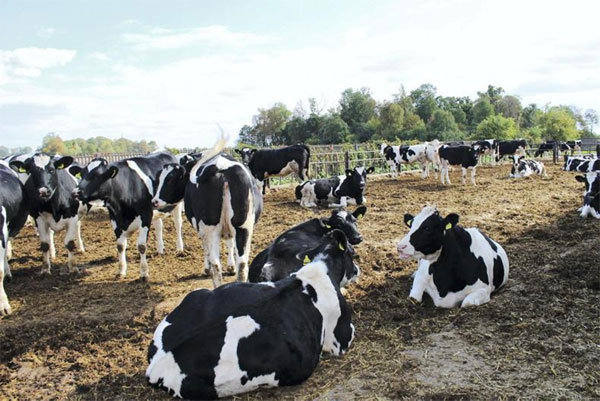Daijiworld Media Network - New Delhi
New Delhi, Aug 20: India’s dairy sector has recorded a remarkable 80% jump in export value during the financial year 2024–25, reaching $492.9 million, with total volumes touching 113,350.4 metric tonnes, a 77.9% increase over the previous year. This surge reinforces India’s growing influence in the global food trade and highlights dairy as a key contributor to foreign exchange earnings.
Major export destinations for Indian dairy products included the UAE, USA, Saudi Arabia, Bangladesh, and Bhutan, showcasing strong demand across both traditional and emerging markets. With India maintaining its position as the world’s largest milk producer since 1998, the country now contributes 25% of global milk output.

India's domestic milk production has seen a steady and impressive rise — from 146.3 million tonnes in 2014–15 to 239.2 million tonnes in 2023–24, marking a 63.56% increase over a decade, growing at an annual rate of 5.7%, more than double the global growth rate of 2%. Simultaneously, per capita milk availability has risen to 471 grams per person per day, compared to the global average of 322 grams, reflecting improved nutritional access at home.
The Centre credited several key schemes for supporting the rapid expansion of the dairy sector. The National Programme for Dairy Development (NPDD) has been rolled out nationwide to bolster milk production and processing infrastructure, complementing state efforts. In times of crisis — whether due to market shocks or natural disasters — the government is also offering interest subvention on working capital loans to State Dairy Cooperative Federations.
To further modernise and scale the sector, the Animal Husbandry Infrastructure Development Fund (AHIDF) is providing financial assistance through scheduled banks for entrepreneurs, cooperatives, MSMEs, FPOs, and other organisations. These funds are being channelled into creating processing units, value-added dairy products, animal feed plants, breed improvement centres, waste management systems, and even veterinary pharmaceutical manufacturing.
The Rashtriya Gokul Mission continues to play a vital role in conserving indigenous cattle breeds and enhancing the genetic quality of bovines to boost milk productivity. Alongside it, the National Livestock Mission (NLM) focuses on entrepreneurship and breed development in livestock segments such as poultry, sheep, goats, and pigs, with incentives directed at individuals, producer organisations, and state governments.
In ensuring herd health and veterinary care, the Livestock Health and Disease Control Programme is supporting mass vaccination drives, veterinary capacity building, disease surveillance, and infrastructure strengthening. Together, these initiatives underscore the government’s multi-pronged approach to transforming dairy into a robust, high-value sector with global competitiveness.
India’s dairy export boom, combined with its strategic policy push, signals a strong outlook not only for rural income growth and nutrition security but also for sustained leadership in the international dairy market.